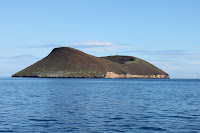.JPG) |
| Old-Time Communication |
For those coming to Galapagos who live in large cities and take their connectivity for granted, a visit to the Galapagos Islands can be eye-opening; somewhat like when Dorothy was in Oz and told, "You aren't in Kansas anymore." Here, you are at the frontier of technology, not the cutting edge.







